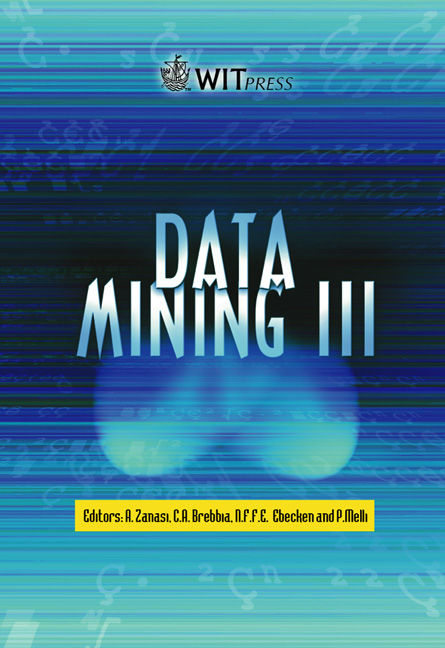KDB2000: An Integrated Knowledge Discovery Tool
Price
Free (open access)
Volume
28
Pages
Published
2002
Size
668 kb
Paper DOI
10.2495/DATA020511
Copyright
WIT Press
Author(s)
A Appice, M Ceci & D Malerba
Abstract
Knowledge discovery in databases (KDD) is not a straightforward application of a single method, but rather a long lasting, iterative and interactive process during which the user has to model a multitude of data derivation processes, execute them and interpret the results in order to formulate new derivation processes. Having a single tool that supports the user in the selection of data, their preprocessing and transformation, as well as their mining, is an important requirement of KDD practitioners. Moreover, it is important to assist the user of a KDD system in the selection of the right parameters or methods. This paper describes KDB2000, a tool that integrates database access, data preprocessing and transformation techniques, a fall range of data mining algorithms as well as pattern validation and visualization. This integration aims to support the user in the entire KDD process enabling him/her to see the same problem from many different angles for a thorough investigation. In addition, KDB2000 makes use of the agent technology to assist the user in some data mining tasks, such as choosing the best pruning strategy for induced decision tree in accordance to both data features and used needs. 1 Introduction The amount of data being collected in databases today far exceeds our ability to analyze them without the use of automated analysis techniques. The field of knowledge discovery in databases (KDD) is evolving to provide automated analysis solutions. Knowledge discovery is defined as the non-trivial process of identifying valid, novel, potentially useful, and ultimately understandable
Keywords





